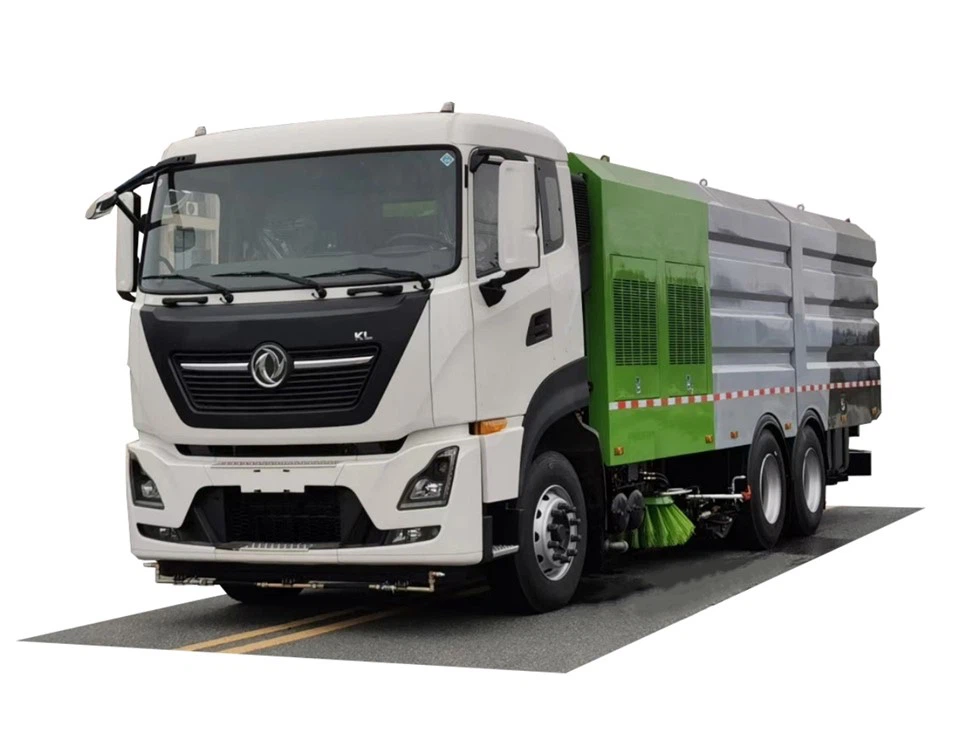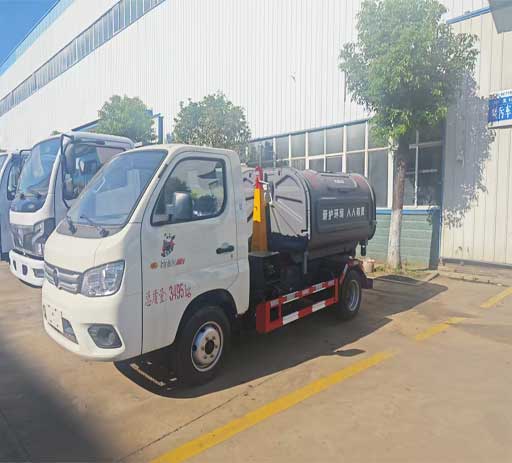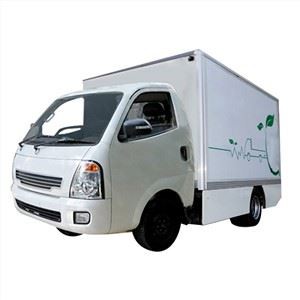Street Sweeping Trucks: The Essential Guide to Keeping Our Streets Clean

Street sweeping trucks play a crucial role in maintaining clean and safe urban environments. These powerful machines help combat pollution and enhance community aesthetics by removing debris, litter, and organic materials from our streets. In this comprehensive article, we will explore street sweeping trucks in detail, discussing their types, functionalities, benefits, and tips for cities to effectively incorporate them into their maintenance programs.
What Are Street Sweeping Trucks?
Street sweeping trucks are specialized vehicles designed to clean road surfaces, parking lots, and other paved areas. They use a combination of brushes, vacuum systems, and water spray to effectively remove dust, dirt, leaves, and garbage. Street sweeper trucks operate in various settings, from urban areas to rural regions, and play an essential role in municipal waste management.
Types of Street Sweeping Trucks
1. Mechanical Broom Sweepers
Mechanical broom sweepers are the most common type of street sweeping trucks. They utilize rotating brushes that collect debris, which is then deposited into a hopper. These sweepers can handle larger debris and are suitable for city streets and roads.
2. Vacuum Sweepers
Vacuum sweepers use suction to pick up dirt and debris from the road surface. They often come equipped with filters to ensure fine particles are captured and do not enter the atmosphere. These trucks are ideal for sensitive environments, such as parks or residential areas.
3. Regenerative Air Sweepers
Regenerative air sweepers use a combination of high-pressure air and suction to ensure an effective clean. They are versatile and can remove fine dust particles along with larger debris, making them suitable for various cleaning applications, including highways and parking lots.
4. Water Trucks with Street Sweeping Capabilities
Some water trucks are modified to include street sweeping functionalities. These trucks usually have a water tank and spray system to suppress dust while sweeping. They are commonly used in construction sites or areas where dust control is crucial.
Key Components of Street Sweeping Trucks
1. Vacuum System
The vacuum system creates suction that picks up debris from the road. It usually includes a fan, a collection hose, and a debris storage container.
2. Brushes
Brushes are essential for loosening dirt and debris from the surface. They may be made of different materials, depending on the type of debris being removed.
3. Water Spray System
The water spray system helps to suppress dust and keep collected debris from becoming airborne. This component is crucial for maintaining air quality during street cleaning operations.
4. Control System
The control system allows the operator to manage various functions of the street sweeper, including brush rotation speed and vacuum power.
Benefits of Street Sweeping Trucks

1. Pollution Control
Street sweeping trucks help to reduce air pollution by collecting debris that can contribute to airborne particles. This is essential for enhancing public health in urban environments.
2. Aesthetic Improvement
Regular street sweeping helps maintain clean and attractive streets. This promotes community pride and enhances the overall appearance of neighborhoods.
3. Increased Safety
By removing debris, street sweeping trucks improve road safety for both pedestrians and drivers. Loose debris can cause accidents, particularly in busy urban areas.
4. Cost-Effectiveness
Investing in street sweeping trucks can lead to reduced maintenance costs for roads. Regular cleaning prolongs the life of pavement and minimizes repair needs.
5. Enhanced Biodiversity
Regularly cleaning streets reduces the accumulation of pollutants that can harm local ecosystems. This creates a healthier environment for flora and fauna.
Choosing the Right Street Sweeping Truck for Your City
1. Assessing Needs
Consider your city’s specific requirements, such as the volume of debris on the streets, types of roads, and frequency of use. This will help determine the best street sweeping truck type for your needs.
2. Evaluating Budget
Street sweeping trucks come with various price tags. Make sure to account for not just the purchase price but also maintenance, fuel, and labor costs when budgeting.
3. Considering Environmental Impact
Look for street sweepers that minimize environmental impact. Regenerative air sweepers, for example, often produce fewer emissions and use less water.
4. Researching Brands and Models
Take time to research the different brands and models of street sweeping trucks available. Look for reliability, user reviews, and service availability in your region.
Maintenance Tips for Street Sweeping Trucks
1. Regular Inspections

Make it a practice to conduct regular inspections on the street sweeping truck to ensure all components are functioning correctly and to identify any maintenance needs early.
2. Keep It Clean
After each use, clean the sweeping unit, including brushes and the vacuum system. This helps prolong the lifespan of the components.
3. Service Schedule
Establish a routine maintenance schedule according to the manufacturer’s guidelines, including oil changes, filter replacements, and replacing wear items like brushes and hoses.
4. Train Operators
Training operators on effectively using and maintaining street sweeping trucks can lead to better performance and lower repair costs in the long run.
Real-World Examples of Effective Street Sweeping
Case Study 1: City of San Francisco
San Francisco employs a fleet of vacuum street sweepers that operate multiple times a week in residential areas, focusing on high-traffic and park locations. The city reports a significant reduction in litter and pollutants due to these efforts.
Case Study 2: Chicago’s Sweeping Program
Chicago has implemented a comprehensive street sweeping program that involves community outreach to inform residents of scheduled cleanings. This approach has resulted in higher participation rates and cleaner streets overall.
Case Study 3: The City of Seattle
Seattle uses regenerative air sweepers that can carry out cleanings even in wet conditions, a smart choice given the city’s climate. This innovation allows them to maintain street cleanliness year-round.
Future of Street Sweeping Technology
1. Autonomous Street Sweeping Trucks

Innovation in technology is leading to the development of autonomous street sweeping trucks that can operate without human intervention. This could result in cost savings and more efficient cleaning processes.
2. Electric and Hybrid Models
Environmental concerns have prompted manufacturers to develop electric and hybrid street sweepers. These models reduce fuel consumption and minimize emissions, contributing positively to urban air quality.
3. Smart Scheduling Solutions
Using data analytics, cities can implement smart scheduling systems for street cleaning. This approach utilizes real-time data to optimize routes and ensure areas are cleaned when most needed.
Conclusion: The Importance of Street Sweeping Trucks
Street sweeping trucks are invaluable assets for urban management, improving public health, safety, and the aesthetic quality of cities. By selecting the right types of sweeping trucks, providing proper maintenance, and leveraging technology, municipalities can better serve their communities and maintain cleaner, safer streets for all.
FAQ Section
1. How often should streets be swept?
Frequency depends on factors such as location and traffic volume. Urban areas may require weekly sweeps, while rural roads can be done monthly.
2. What debris can street sweeping trucks remove?
Street sweeping trucks can remove leaves, litter, gravel, dirt, and small debris. More advanced models can also collect fine dust particles.
3. Are street sweeping trucks environmentally friendly?
Many modern street sweeping trucks use water spray systems and vacuum technology to minimize dust and emissions, making them more environmentally friendly than older models.
4. How much does a street sweeping truck cost?
Prices can vary significantly based on type and features, ranging from $150,000 to over $300,000 for high-end models.
5. Can street sweeping trucks operate in all weather conditions?
While most street sweeping trucks can operate in various weather conditions, some models, like regenerative air sweepers, perform well even in rain, making them suitable for year-round use.
6. What maintenance do street sweeping trucks require?
Regular maintenance includes cleaning the brushes and vacuum system, changing the oil, replacing filters, and ensuring all parts function correctly to prevent breakdowns.
